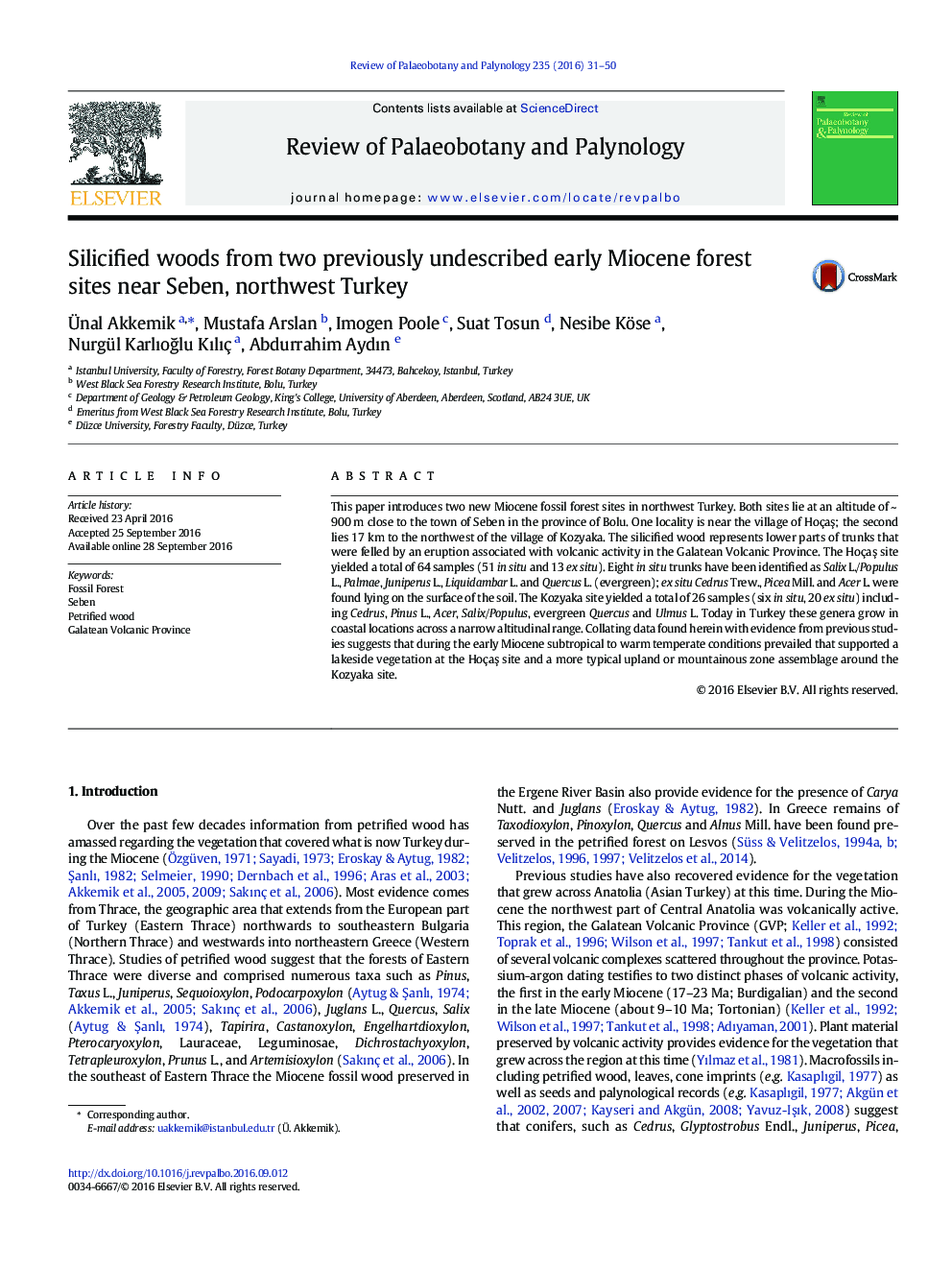| Article ID | Journal | Published Year | Pages | File Type |
|---|---|---|---|---|
| 6448606 | Review of Palaeobotany and Palynology | 2016 | 20 Pages |
Abstract
This paper introduces two new Miocene fossil forest sites in northwest Turkey. Both sites lie at an altitude of ~Â 900Â m close to the town of Seben in the province of Bolu. One locality is near the village of HoçaÅ; the second lies 17Â km to the northwest of the village of Kozyaka. The silicified wood represents lower parts of trunks that were felled by an eruption associated with volcanic activity in the Galatean Volcanic Province. The HoçaÅ site yielded a total of 64 samples (51 in situ and 13 ex situ). Eight in situ trunks have been identified as Salix L./Populus L., Palmae, Juniperus L., Liquidambar L. and Quercus L. (evergreen); ex situ Cedrus Trew., Picea Mill. and Acer L. were found lying on the surface of the soil. The Kozyaka site yielded a total of 26 samples (six in situ, 20 ex situ) including Cedrus, Pinus L., Acer, Salix/Populus, evergreen Quercus and Ulmus L. Today in Turkey these genera grow in coastal locations across a narrow altitudinal range. Collating data found herein with evidence from previous studies suggests that during the early Miocene subtropical to warm temperate conditions prevailed that supported a lakeside vegetation at the HoçaÅ site and a more typical upland or mountainous zone assemblage around the Kozyaka site.
Keywords
Related Topics
Physical Sciences and Engineering
Earth and Planetary Sciences
Palaeontology
Authors
Ãnal Akkemik, Mustafa Arslan, Imogen Poole, Suat Tosun, Nesibe Köse, Nurgül KarlıoÄlu Kılıç, Abdurrahim Aydın,
